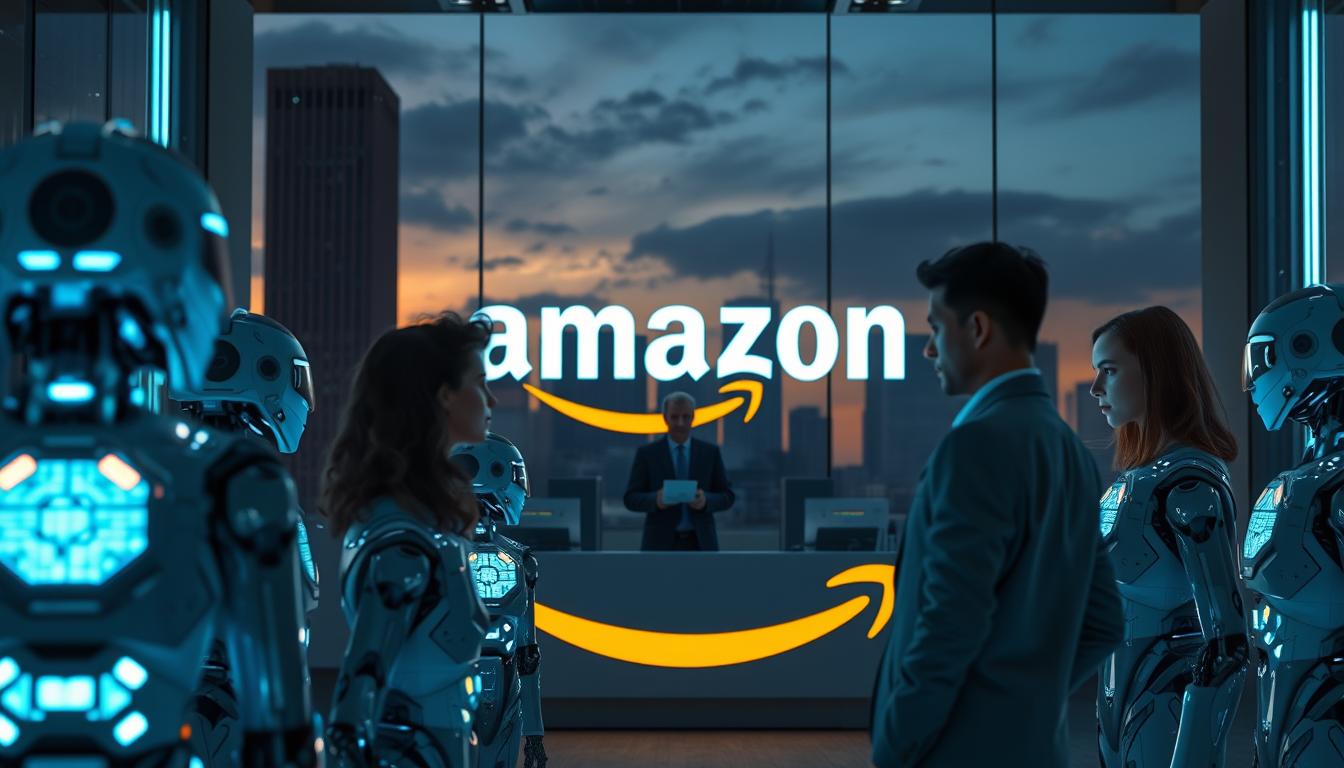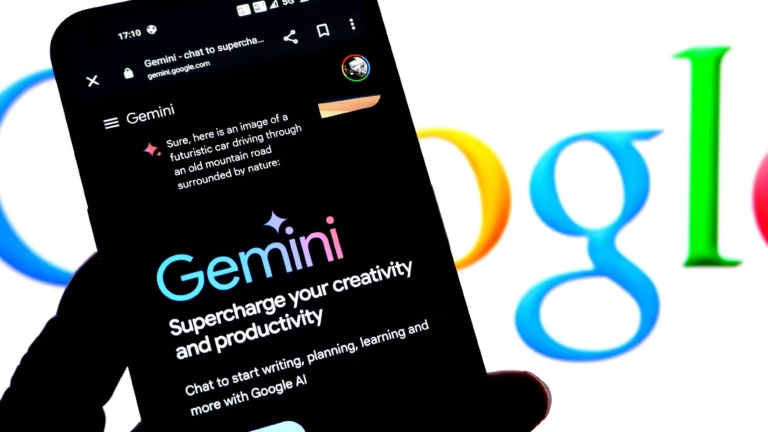Amazon’s corporate workforce may shrink as AI takes over routine tasks

As technology continues to advance, Amazon AI integration is becoming increasingly prevalent. This shift is expected to have a
significant impact on the company’s corporate workforce.

Rollout of generative AI and agents will reduce Amazon
The introduction of AI technologies is likely to automate routine tasks, potentially leading to a corporate workforce reduction. As Amazon continues to evolve, it’s essential to consider the implications of this change.
Key Takeaways
- The integration of AI may lead to workforce adjustments at Amazon.
- Routine tasks are likely to be automated, impacting corporate roles.
- The shift towards AI could result in a more streamlined workforce.
- Amazon’s adoption of AI technologies is expected to continue.
- The impact on the corporate workforce will be significant.
The Evolution of Amazon’s Corporate Workforce
The evolution of Amazon’s corporate structure is a story of rapid growth, strategic adaptations, and a relentless pursuit of innovation. As the company continues to expand its offerings and enter new markets, its corporate workforce has had to adapt to meet the changing demands.
Historical Growth Patterns at Amazon
Amazon’s corporate workforce has experienced significant growth since its early days. The company has consistently invested in hiring top talent to drive innovation and support its expanding operations. This growth has been fueled by Amazon’s strategic acquisitions and its entry into new markets.
| Year | Corporate Employees | Growth Rate |
| 2018 | 250,000 | 25% |
| 2019 | 300,000 | 20% |
| 2020 | 350,000 | 17% |
Recent Workforce Trends and Challenges
In recent years, Amazon has faced challenges in maintaining its growth trajectory, with increasing competition and changing market dynamics. The company has had to adapt its workforce strategies to address these challenges, investing in new technologies and training programs to upskill its employees.
“Amazon’s ability to innovate and adapt has been key to its success, and this will continue to be the case as the company navigates the challenges of a rapidly changing business environment.”
The Current Size and Structure of Amazon’s Corporate Teams
Today, Amazon’s corporate workforce is a diverse and global team, with employees located in offices around the world. The company continues to invest in hiring and training programs to support its growth and innovation goals.
Amazon’s corporate teams are organized into various departments, including technology, marketing, and finance, each with its own unique culture and work environment. The company’s corporate structure is designed to support its fast-paced and innovative business environment.
Understanding Generative AI and Intelligent Agents
The integration of generative AI and intelligent agents is transforming Amazon’s corporate landscape. This technological advancement is not just about automation; it’s about augmenting human capabilities with sophisticated AI systems that can learn, adapt, and interact in complex ways.
What is Generative AI?
Generative AI refers to artificial intelligence systems capable of generating new content, such as text, images, or data, based on the patterns and structures they have learned from existing datasets. These systems use complex algorithms to create novel outputs that can be used in various applications, from content creation to data analysis.
How Intelligent Agents Function in Corporate Settings
Intelligent agents are AI-powered entities that can perform tasks autonomously or semi-autonomously. In corporate settings, these agents can assist with a range of functions, from customer service to data processing. They operate by using algorithms to analyze data, make decisions, and take actions based on predefined rules or learned patterns.
Current Capabilities and Limitations of AI Systems
Current AI systems have made significant strides in capabilities such as natural language processing, image recognition, and predictive analytics. However, they still face limitations, particularly in areas requiring human judgment, creativity, or complex decision-making. Understanding these capabilities and limitations is crucial for effectively integrating AI into corporate workflows.
| AI Capability | Description | Limitation |
| Natural Language Processing | Analyzing and generating human-like text | Understanding nuanced human language |
| Image Recognition | Identifying objects within images | Contextual understanding of images |
| Predictive Analytics | Forecasting future trends based on data | Accounting for unforeseen variables |
Amazon’s AI Strategy and Implementation Plans
Amazon’s approach to AI is multifaceted, involving significant investments and strategic planning. The company’s commitment to leveraging AI technologies is evident in its comprehensive strategy, which encompasses various aspects of its operations.
Amazon’s Investment in AI Technologies
Amazon has been making substantial investments in AI technologies to enhance its operational efficiency and customer experience. The company is focusing on developing advanced AI models that can be integrated into various departments, including customer service, logistics, and marketing. AI-powered tools are being developed to automate routine tasks, allowing employees to focus on more complex and creative work.
Timeline for AI Integration Across Departments
The timeline for AI integration at Amazon is ambitious, with plans to roll out AI solutions across various departments over the next few years. The company is starting with pilot projects in key areas such as customer service and supply chain management. Gradual implementation will allow Amazon to test and refine its AI systems, ensuring a smooth transition.
Key AI Projects Currently in Development
Amazon is currently working on several key AI projects, including the development of more sophisticated intelligent agents that can handle complex customer inquiries. Another area of focus is the use of AI in predictive analytics to improve demand forecasting and inventory management. These projects are part of Amazon’s broader strategy to harness the power of AI to drive innovation and efficiency.
Routine Corporate Tasks Prime for AI Automation
As Amazon continues to integrate AI into its operations, routine corporate tasks are becoming prime candidates for automation. This shift is expected to significantly impact various aspects of Amazon’s corporate workforce.
Administrative and Clerical Functions
Administrative and clerical tasks are among the most susceptible to AI automation. These tasks, which include document processing and scheduling, are typically repetitive and time-consuming.
Document Processing and Management
AI can efficiently handle document processing and management, including tasks such as data entry, filing, and retrieval. By automating these tasks, Amazon can reduce the workload on its administrative staff and minimize errors.
Scheduling and Coordination
Scheduling and coordination are other areas where AI can make a significant impact. AI systems can optimize scheduling by considering various factors such as employee availability, workload, and priorities.
Data Analysis and Reporting
Data analysis and reporting are critical functions within Amazon’s corporate structure. AI can automate the analysis of large datasets, providing insights that can inform business decisions. Additionally, AI can generate reports based on these insights, saving time and improving accuracy.
| Task | Manual Effort | AI-Driven Effort |
| Data Analysis | High | Low |
| Reporting | Medium | Low |
Customer Service Operations
Customer service operations are another area where AI is likely to have a significant impact. AI-powered chatbots and virtual assistants can handle customer inquiries, provide support, and even help resolve issues. This not only improves customer satisfaction but also reduces the workload on human customer service representatives.
“AI is not just a tool, it’s a strategic partner that can help businesses like Amazon innovate and stay ahead of the curve.”
By automating routine corporate tasks, Amazon can focus on more strategic initiatives and improve overall efficiency. As AI continues to evolve, it’s likely that we’ll see even more innovative applications in the corporate world.
Rollout of generative AI and agents will reduce Amazon’s corporate workforce
As Amazon continues to integrate generative AI and intelligent agents into its operations, a significant shift in its corporate workforce is anticipated. The company’s investment in AI technologies is part of a broader strategy to enhance efficiency and streamline processes.
Projected Workforce Reduction Numbers
Analysts predict that the implementation of generative AI could lead to a substantial reduction in Amazon’s corporate workforce. While exact numbers are difficult to determine, it’s estimated that up to 15% of corporate roles could be automated in the next two years.
This reduction is expected to be gradual, allowing for retraining and reassignment of personnel where possible.
Departments Most Affected by Automation
Administrative and clerical functions are likely to be the most affected by AI automation. Tasks such as data entry, scheduling, and reporting are prime candidates for AI-driven solutions.
Additionally, customer service operations may also see significant changes with the integration of advanced chatbots and virtual assistants.
Timeline for Expected Staff Changes
The timeline for these changes is expected to unfold over the next 24 months. Initial implementations are already underway, with more comprehensive rollouts planned for the coming quarters.
Amazon is expected to provide ongoing support for employees affected by these changes, including retraining programs and outplacement services.
Amazon’s Official Position on AI-Driven Workforce Changes
With AI increasingly integrated into Amazon’s business model, the leadership team is navigating significant workforce changes. As the company continues to adopt AI technologies, Amazon’s leadership is focused on balancing the benefits of automation with the needs of its employees.

Amazon leadership AI-driven changes
Public Statements from Amazon Leadership
Amazon’s leadership has made public statements regarding the company’s AI-driven changes. CEO Andy Jassy has emphasized that while AI will replace some jobs, it will also create new opportunities for employees to develop new skills. In various interviews and internal communications, Jassy has highlighted the company’s commitment to retraining and upskilling its workforce.
Internal Communication Strategies
Internally, Amazon has implemented various communication strategies to keep employees informed about the changes brought about by AI. The company has used town hall meetings, internal newsletters, and digital platforms to ensure transparency and address employee concerns. These efforts aim to foster a culture of understanding and cooperation as the company navigates this significant transformation.
Employee Reactions and Concerns
Employee reactions to AI-driven changes have been mixed. While some employees are excited about the new opportunities created by AI, others are concerned about job security. Amazon has acknowledged these concerns and is working to provide support for employees who may be displaced by automation. The company is investing in retraining programs designed to help employees develop the skills needed for new roles within the organization.
Industry-Wide Trends: AI and Corporate Downsizing
Corporate downsizing due to AI adoption is not unique to Amazon; it’s a widespread phenomenon. As companies across various sectors integrate AI into their operations, the impact on their workforces is becoming increasingly evident.
Similar Moves by Other Tech Giants
Other tech giants are also leveraging AI to streamline their operations. For instance, Google has been using AI to enhance its search algorithms and improve user experience. Similarly, Microsoft has integrated AI into its Office software to automate routine tasks.
A recent survey revealed that over 50% of tech companies are planning to adopt AI solutions in the next two years. This trend is expected to lead to significant changes in the job market.
| Company | AI Application | Impact on Workforce |
| Search Algorithms | Reduced need for manual data analysis | |
| Microsoft | Office Software Automation | Shift from routine tasks to strategic roles |
| Amazon | Customer Service Automation | Reduction in customer service representatives |
Economic Factors Driving AI Adoption
The economic benefits of AI adoption are a significant driver for companies. By automating routine tasks, businesses can reduce operational costs and improve efficiency. Additionally, AI can help companies make data-driven decisions, leading to better strategic planning.
Economic factors influencing AI adoption include:
- Cost savings through automation
- Improved productivity
- Enhanced decision-making capabilities
Lessons from Previous Technological Transitions
History has shown that technological advancements often lead to significant changes in the workforce. During the Industrial Revolution, many manual labor jobs were automated, leading to a shift towards more skilled labor. Similarly, the advent of the internet led to the creation of new job categories that didn’t exist before.
As AI continues to evolve, it’s crucial for companies to invest in retraining and upskilling their workforce to adapt to new technologies.
The Human Impact: Challenges and Opportunities for Amazon Employees
The integration of AI into Amazon’s operations is expected to have a profound effect on its employees, reshaping their roles and responsibilities. As the company continues to adopt and implement AI technologies, it’s crucial to consider the human impact of these changes.
Retraining and Reskilling Initiatives
Amazon has recognized the need to support its employees through this transition by implementing various retraining and reskilling initiatives. These programs aim to equip employees with the necessary skills to thrive in an AI-driven work environment.
Amazon’s Internal Education Programs
Amazon has developed internal education programs designed to enhance employees’ skills in areas related to AI, such as data analysis and machine learning. These programs are tailored to help employees adapt to new technologies and take on more complex roles within the company.
Partnership with External Training Providers
In addition to its internal programs, Amazon has partnered with external training providers to offer specialized courses and certifications. This collaboration ensures that employees have access to a wide range of training opportunities, further enhancing their skills and employability.
New Roles Created by AI Integration
The integration of AI at Amazon is not only about automating existing tasks but also about creating new roles and opportunities. As AI becomes more prevalent, the company is likely to see the emergence of new job positions focused on AI development, deployment, and management.
Support Systems for Displaced Workers
For employees whose roles are displaced by AI, Amazon has put in place support systems to help them transition. These include career counseling, job placement services, and outplacement support to ensure that affected employees can find new opportunities within or outside the company.

AI impact on employees
Conclusion: The Future of Work in an AI-Enhanced Amazon
As Amazon continues to integrate generative AI and intelligent agents into its operations, the company’s corporate workforce is poised for significant changes. The future of work at Amazon will be shaped by the increasing use of AI to automate routine tasks, potentially leading to workforce changes across various departments.
The impact of AI on Amazon’s workforce will depend on the company’s ability to retrain and reskill its employees, as well as its willingness to support workers who may be displaced. As Amazon navigates this transition, the company will be at the forefront of the future of work in an AI-enhanced environment.
With AI set to play a larger role in Amazon’s operations, the company is likely to emerge as a leader in the adoption of AI technologies, driving innovation and efficiency across its business. As the future of work continues to evolve, Amazon’s experience will provide valuable insights into the opportunities and challenges presented by AI-enhanced workplaces.
FAQ
What is the main reason behind Amazon’s potential corporate workforce reduction?
The main reason is the integration of AI technologies, specifically generative AI and intelligent agents, to automate routine corporate tasks.
How will AI affect administrative tasks at Amazon?
AI will automate administrative tasks such as document processing and management, scheduling, and coordination, making these processes more efficient.
What departments are most likely to be affected by AI automation?
Departments that handle routine corporate tasks, such as administrative and clerical functions, data analysis and reporting, and customer service operations, are most likely to be affected.
Will Amazon provide retraining and reskilling initiatives for employees displaced by AI?
Yes, Amazon is expected to offer retraining and reskilling initiatives, including internal education programs and partnerships with external training providers, to help employees adapt to new roles.
What is the expected timeline for AI integration across Amazon’s departments?
The timeline for AI integration varies across departments, but Amazon has been investing in AI technologies and is expected to continue implementing AI solutions in the near future.
How will AI integration create new roles at Amazon?
AI integration will create new roles related to AI development, deployment, and maintenance, as well as roles that require human skills such as creativity, empathy, and problem-solving.
What is Amazon’s official stance on AI-driven workforce changes?
Amazon’s leadership has made public statements regarding the company’s AI strategy, emphasizing the potential benefits of AI integration while also acknowledging the need to support employees through this transition.
Are other tech giants also adopting AI and reducing their workforce?
Yes, other tech giants are also investing in AI and automating routine tasks, leading to workforce reductions in some cases, as part of a broader industry trend.
What support systems will Amazon have in place for displaced workers?
Amazon is expected to have support systems in place, including outplacement services and career counseling, to help displaced workers transition to new roles or leave the company.



